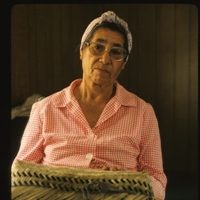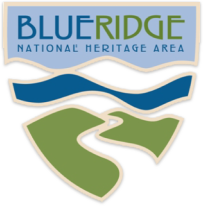
Eva Wolfe
Eva Wolfe was an accomplished weaver of rivercane baskets, a traditional type of Cherokee basketry. Born in 1922 in the Soco community of the Qualla Boundary, Wolfe first learned the craft from her mother. She later expanded her skills under the direction of her aunt Lottie Stamper, a noted Cherokee basket-weaving instructor. Wolfe pursued her craft all of her life, steadily making and selling baskets while raising a family of 11 children.
Although proficient in all respects of basketmaking, Eva Wolfe won special distinction for her double-weave baskets. Considered one of the most difficult techniques of plaited basketry, the doubleweave technique requires the continuous weaving of one basket inside another to create a flawless surface both inside and out.
Weaving rivercane takes an immense amount of preparation. Each April, she and her husband Amble would travel 80 miles from Cherokee to select and cut cane. During the same month, she gathered her annual supply of bloodroot and butternut, which she used to dye her baskets. Using a variety of knives, Wolfe would split each cane stalk into four strips. When weaving she would use as many as 120 strips of cane at once, which she manipulated with amazing dexterity.
Eva Wolfe’s devotion to the doubleweave technique was a major factor in the revival of interest in this style. Having won awards for excellence in craftsmanship at tribal exhibits for years, her work placed first in an exhibition sponsored by the US Department of the Interior in 1968. The following year she was selected as the first Cherokee artist to have work displayed in a national exhibit. In 1978, the National Endowment for the Arts awarded a special grant for the creation of an exhibit of her work. She received the North Carolina Folklore Society’s Brown-Hudson Award in 1988, and in 1989 received the North Carolina Heritage Award.


